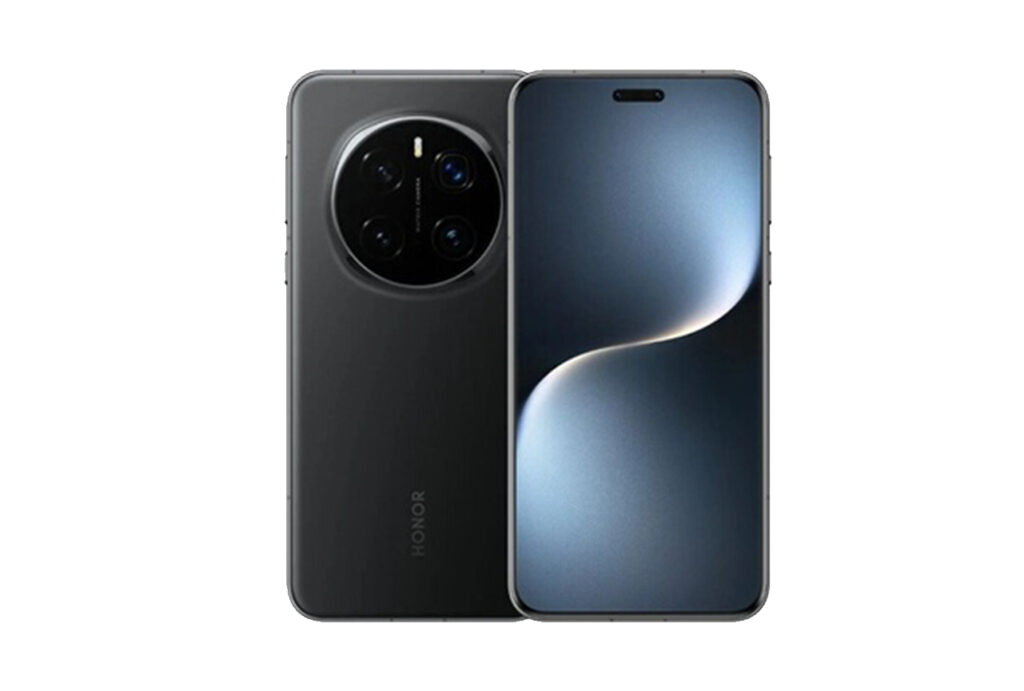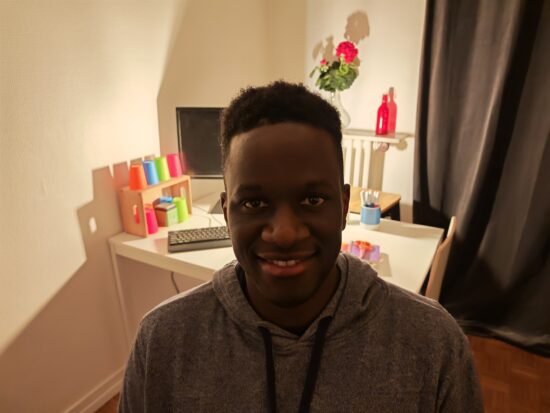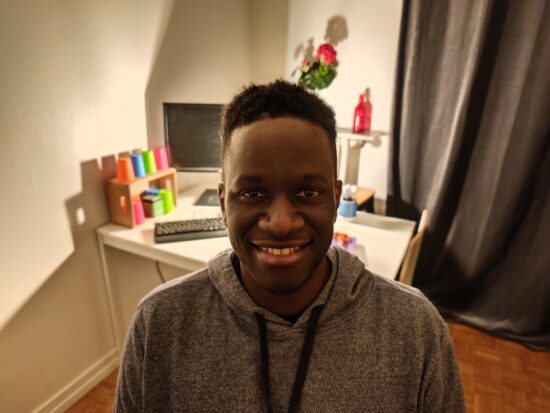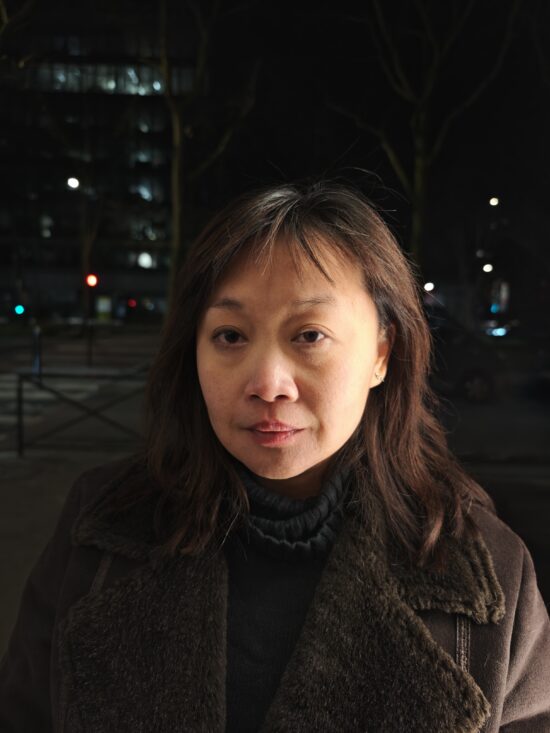We put the Honor Magic7 Pro through our rigorous DXOMARK Camera test suite to measure its performance in photo, video, and zoom quality from an end-user perspective. This article breaks down how the device fared in a variety of tests and several common use cases and is intended to highlight the most important results of our testing with an extract of the captured data.
Overview
Key camera specifications:
- Primary: 50MP 1/1.3″ sensor, 1.2µm pixels, 24mm equivalent f/1.4-2.0 variable aperture lens, Dual Pixel PDAF, OIS
- Ultra-wide: 50MP 1/2.88″ sensor, 0.61µm pixels, 12mm equivalent f/2.0-aperture lens
- Tele: 200MP 1/1.4″ sensor, 0.56µm pixels, 72mm equivalent f/2.6-aperture lens, PDAF, OIS
Scoring
Sub-scores and attributes included in the calculations of the global score.
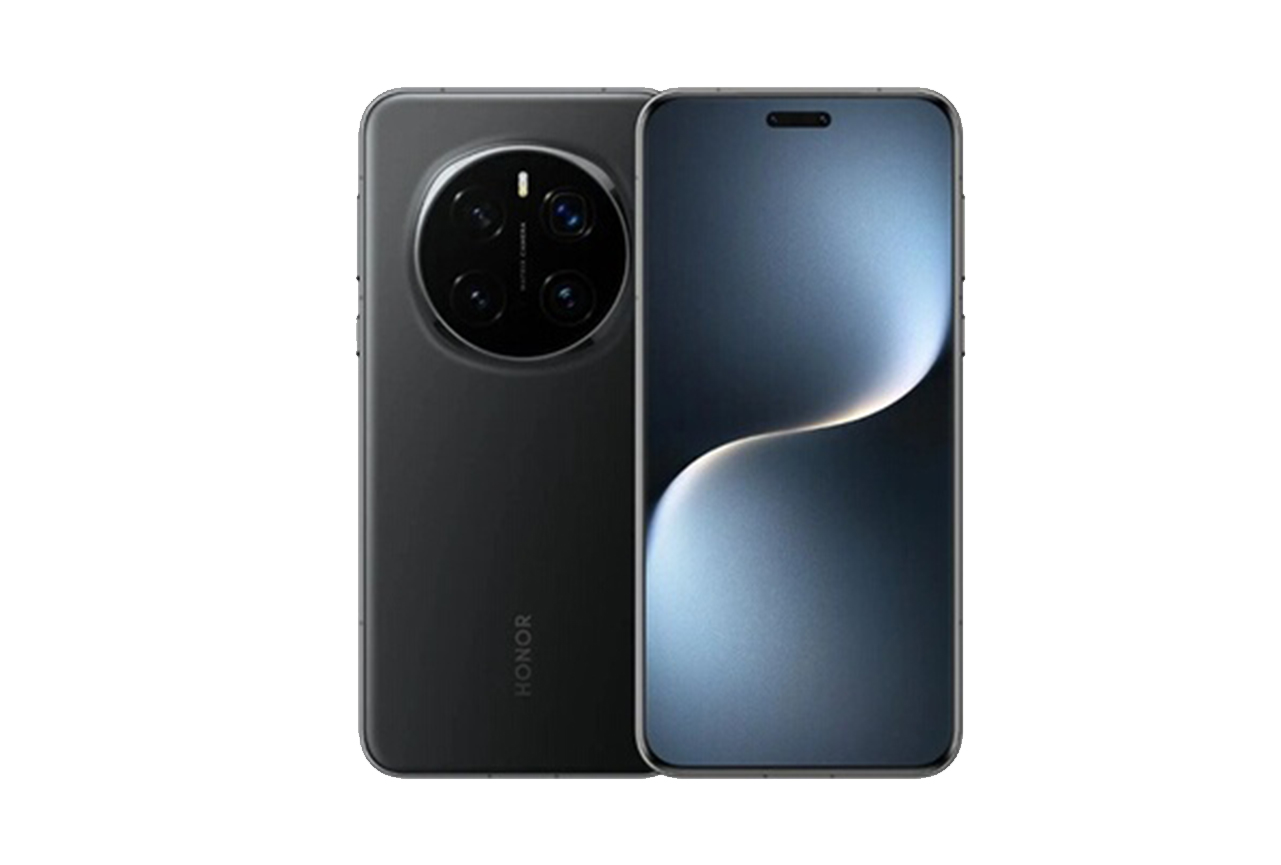
Honor Magic7 Pro


Use cases & Conditions
Use case scores indicate the product performance in specific situations. They are not included in the overall score calculations.
Portrait
Portrait photos of either one person or a group of people
Outdoor
Photos & videos shot in bright light conditions (≥1000 lux)
Indoor
Photos & videos shot in good lighting conditions (≥100lux)
Lowlight
Photos & videos shot in low lighting conditions (<100 lux)
Zoom
Photos and videos captured using zoom (more than 1x)
Cons
- No documented HDR format used in photo on tested version of the device
- Unnatural texture rendering in low light
- Lack of dynamic range and unstable exposure in video mode
The Honor Magic7 Pro delivered a solid overall camera performance in the DXOMARK Camera tests, but some limitations meant it could not claim one of the top positions in our ranking. The device stood out in terms of zoom capabilities, thanks to high levels of texture, even at long range tele settings. However, some artifacts remained noticeable in tele shots. The lack of support for any public HDR formats in the version of the device, that we had available for testing, was a major drawback. It was responsible for a flatter and darker overall image rendering, when compared to competitors like the Huawei Pura 70 Ultra or Xiaomi 15 Ultra, when viewed with the playback conditions of our V6 protocol.
The Magic7 Pro’s primary camera module comes with a variable aperture, but in our tests the system failed to provide any real benefits in scenes where a wide depth of field is advantageous, for example group portraits. Our testers also found the Honor’s image processing to apply heavy sharpening and AI-generated detail reconstruction. This resulted in unnatural textures and an overall artificial look of the images. Video performance was another weak point, with noticeable instabilities, significant noise, and overall inconsistency, compared to leading rivals. Despite the relatively good zoom performance, the sum of the issues mentioned above prevented the Magic7 Pro from fully competing at the highest level in the Ultra Premium segment.
When shooting in low light, the Honor Magic7 Pro’s primary camera module handled exposure well and delivered natural color rendering, capturing a well-balanced scene without any clipped highlights. However, while the aggressive noise reduction was capable of reducing grain, this came at the cost of fine detail. In order to compensate for this, the image processing pipeline frequently produced unnatural texture artifacts, giving surfaces and skin textures an overly processed appearance.
When capturing portraits, the Honor Magic7 Pro delivered mixed results. In good lighting, color rendering on faces was generally accurate, but contrast was low compared to devices that use a publicly documented HDR format. In addition, aggressive image processing often resulted in unnatural textures and an overprocessed look. On the plus side, subject isolation was decent, albeit with sometimes inconsistent edge detection. Using the telephoto lens offered more natural facial proportions and framing, but sharpness was often exaggerated. In lower light, noise reduction caused smearing and loss of detail. The autofocus could also be unreliable, making the overall portrait experience less consistent than on top-tier competitors.
The Honor Magic7 Pro delivered on overall solid zoom performance, with good detail and consistent color rendering across most focal lengths. Medium-range zoom (around 3-5x) was particularly good, maintaining good sharpness and minimal noise when shooting in daylight. At longer zoom distances, the device continued to perform well, preserving fine textures better than many competitors in its class. However, some texture artifacts and oversharpening started creeping in at longer tele zoom settings, especially in areas with complex patterns or low contrast. Transitions between lenses were generally smooth, but minor shifts in color tone or exposure could occur. In low light, zoom performance degraded noticeably, with increased noise and reduced detail. This said, the image results remained usable. Overall, the Honor Magic7 Pro’s zoom performance stood out in its class, thanks to reliable results and good levels of detail across a wide range of zoom settings.
Test summary
About DXOMARK Camera tests: DXOMARK’s camera evaluations take place in laboratories and real-world situations using a wide variety of use-cases. The scores rely on objective tests for which the results are calculated directly using measurement software in our laboratory setups, and on perceptual tests where a sophisticated set of metrics allow a panel of image experts to compare aspects of image quality that require human judgment. Testing a smartphone involves a team of engineers and technicians for about a week. Photo and Video quality are scored separately and then combined into an overall score for comparison among the cameras in different devices. For more information about the DXOMARK Camera protocol, click here. More details on smartphone camera scores are available here. The following section gathers key elements of DXOMARK’s exhaustive tests and analyses. Full performance evaluations are available upon request. Please contact us on how to receive a full report.
Photo
Honor Magic7 Pro
180
For scoring and analysis, DXOMARK engineers capture and evaluate more than 3,800 test images in controlled lab environments as well as outdoor, indoor and low-light natural scenes, using the camera’s default settings. The photo protocol is designed to take into account the main use cases and is based on typical shooting scenarios, such as portraits, landscape and zoom photography. The evaluation is performed by visually inspecting images against a reference of natural scenes, and by running objective measurements on images of charts captured in the lab under different lighting conditions from 0.1 to 10,000+ lux and color temperatures from 2,300K to 6,500K.

Main
Honor Magic7 Pro
184
In default photo mode, the Honor Magic7 Pro delivered vibrant, well-balanced colors with reliable white balance and a nice dynamic range. The level of captured detail was good, with fine textures rendered clearly. However, on occasions AI processing could create some softness on skin textures or moving subjects. Noise levels were minimal in daylight shooting and well-managed in low light. Only some slight luminance noise could make an appearance in high-contrast scenes. Autofocus was fast and accurate, usually locking onto the target, even in complex scenes or dim conditions. Overall, the Honor produced sharp, clean, and vibrant images in photo mode, but compared to competing devices with public HDR format, rendering could be slightly flat and lacked brightness.
Close-Up
The Magic7 Pro’s macro performance was decent but did not stand out in the flagship segment. The camera uses the ultra-wide lens for close focusing, allowing shots from a shooting distance of about 2.5–4 cm. In good light, macro images showed fair detail and accurate colors but were not as sharp or textured as the images from dedicated macro camera modules. Edge softness could be noticeable and occasional focus hunting could occur, especially in uneven lighting. In our testing, AI occasionally also overprocessed close-up textures, leading to an unnatural smoothing effect. Overall, macro mode was usable for casual close-ups, such as flowers or textures, but not among the best in class.

Exposure
Honor Magic7 Pro
134
Exposure is one of the key attributes for technically good pictures. The main attribute evaluated is the brightness level of the main subject through various use cases such as landscape, portrait, or still life. Other factors evaluated are the global contrast and the ability to render the dynamic range of the scene (ability to render visible details in both bright and dark areas). When the camera provides Photo HDR format, the images are analyzed with a visualization on an HDR reference monitor, under reference conditions specified in the ISO-22028-5 standard. Repeatability is also important because it demonstrates the camera's ability to provide the same rendering when shooting several images of the same scene.
The Honor Magic7 Pro’s auto exposure was solid in most shooting conditions but fell short of flagship competitors in terms of HDR rendering. While exposure was generally balanced, the device does not support any publicly documented HDR photo format. In our tests, this limited its ability to deliver bright highlights and deep shadows on compatible displays. As a result, images and videos could appear flatter, with lower peak brightness and reduced contrast, compared to flagship devices from Apple, Xiaomi or Oppo. This had an impact on both the ”punch” of the image and the highlight/shadow separation in high-contrast scenes. Our testers also noticed a few failures in challenging dim conditions, where faces were rendered too dark.

Color
Honor Magic7 Pro
133
Color is one of the key attributes for technically good pictures. The image quality attributes analyzed are skin-tone rendering, white balance, color shading, and repeatability. For color and skin tone rendering, we penalize unnatural colors according to results gathered in various studies and consumer insights while respecting the manufacturer's choice of color signature.
The Honor Magic7 Pro delivered vivid and generally well-balanced colors in default photo mode, with accurate white balance and nice saturation in most scenes. However, occasional inconsistencies, such as yellow or magenta shifts under artificial or mixed lighting, could be noticeable. While color tuning was appealing and suitable for social media, it lacked the precise, scene-adaptive color calibration seen in top-tier flagships, like Apple’s latest iPhone models.

Autofocus
Honor Magic7 Pro
135
Autofocus tests concentrate on focus accuracy, focus repeatability, shooting time delay, and depth of field. Shooting delay is the difference between the time the user presses the capture button and the time the image is actually taken. It includes focusing speed and the capability of the device to capture images at the right time, what is called 'zero shutter lag' capability. Even if a shallow depth of field can be pleasant for a single subject portrait or close-up shot, it can also be a problem in some specific conditions such as group portraits; Both situations are tested. Focus accuracy is also evaluated in all the real-life images taken, from infinity to close-up objects and in low light to outdoor conditions.
The Honor Magic7 Pro’s autofocus system was fast and reliable. It combines dual pixel phase detection (PDAF) with a laser autofocus system. In our tests, this resulted in quick and accurate focus acquisition, in both well-lit and moderately low light scenes. Subject tracking was effective and focus remained stable in most everyday scenes. However, in more challenging situations, for example scenes with fast-moving subjects or in very low light, occasional focus hunting or minor focus errors could occur. While solid overall, the Magic7 Pro AF system did not quite match the consistency of top-tier competitors, such as the Google Pixel or Galaxy Ultra series, especially in motion-heavy or low-contrast scenes.
Although the Honor Magic7 Pro features a variable aperture (ranging from f/1.4 to f/4.0), in our tests, its impact in group shots was limited. In scenes with subjects at varying shooting distances, the camera could still select a wider aperture, such as f/1.4, resulting in a shallow depth of field and softness on faces outside the focal plane. This undermined the potential benefit of the hardware, as the feature currently does not deliver consistent improvements in terms of multi-subject shots or layered compositions.
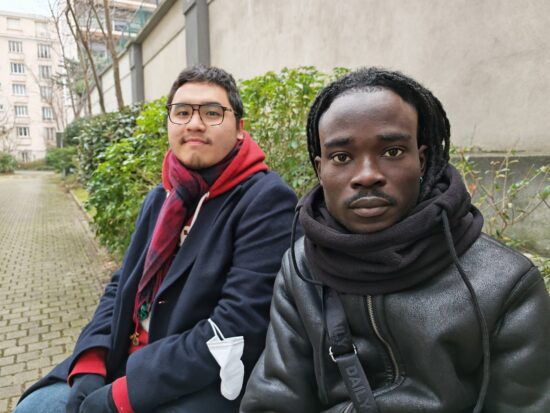

Texture
Honor Magic7 Pro
132
Texture tests analyze the level of details and the texture of subjects in the images taken in the lab as well as in real-life scenarios. For natural shots, particular attention is paid to the level of details in the bright and dark areas of the image. Objective measurements are performed on chart images taken in various lighting conditions from 0.1 to 10,000+ lux and different kinds of dynamic range conditions. The charts used are the proprietary DXOMARK chart (DMC), and the Dead Leaves chart. We also have an AI based metric for the level of details on our realistic mannequins Eugene and Diana.
The Honor Magic7 Pro captured fine textures well, preserving details like fabric, foliage and hair nicely. The high resolution sensor in the primary camera module helped maintain sharpness without excessive noise reduction in good light. However, aggressive AI processing sometimes resulted in over-smoothing, especially in scenes with motion or portraits, where skin texture could be softened and reduced. In low light, texture retention dropped slightly as noise reduction became more aggressive, causing some loss of detail. Overall, texture performance was strong for everyday shots, but images could look slightly artificial when the AI enhancement features kicked in heavily.

Noise
Honor Magic7 Pro
129
Noise tests analyze various attributes of noise such as intensity, chromaticity, grain, structure on real-life images as well as images of charts taken in the lab. For natural images, particular attention is paid to the noise on faces, landscapes, but also on dark areas and high dynamic range conditions. Noise on moving objects is also evaluated on natural images. Objective measurements are performed on images of charts taken in various conditions from 0.1 to 10000 lux and different kinds of dynamic range conditions. The chart used is the Dead Leaves chart and the standardized measurement such as Visual Noise derived from ISO 15739.
In good light the Honor Magic7 Pro delivered low noise levels, producing clean and crisp images with minimal grain. In low light noise was also well under control, but at default settings some luminance noise and slight grain were still noticeable, especially in the shadow portions of the frame. Overall, the noise performance was solid, though, balancing detail retention and noise reduction effectively for everyday shooting.

Artifacts
Honor Magic7 Pro
81
The artifacts evaluation looks at flare, lens shading, chromatic aberrations, geometrical distortion, edges ringing, halos, ghosting, quantization, unexpected color hue shifts, among others type of possible unnatural effects on photos. The more severe and the more frequent the artifact, the higher the point deduction on the score. The main artifacts observed and corresponding point loss are listed below.

Bokeh
Honor Magic7 Pro
175
Bokeh is tested in one dedicated mode, usually portrait or aperture mode, and analyzed by visually inspecting all the images captured in the lab and in natural conditions. The goal is to reproduce portrait photography comparable to one taken with a DLSR and a wide aperture. The main image quality attributes paid attention to are depth estimation, artifacts, blur gradient, and the shape of the bokeh blur spotlights. Portrait image quality attributes (exposure, color, texture) are also taken into account.
The phone’s bokeh mode produced pleasing background blur with smooth, natural-looking separation between subject and background. Edge detection was generally accurate, handling hair and complex outlines well, but our testers noticed some occasional minor errors around fine details. The blur strength was pleasant, applying a full frame DSLR look to the images. However, AI-processing often applied additional skin softening, which made textures look less natural and subjects slightly flat.

Tele
Honor Magic7 Pro
169
All image quality attributes are evaluated at focal lengths from approximately 40 mm to 300 mm, with particular attention paid to texture and detail. The score is derived from a number of objective measurements in the lab and perceptual analysis of real-life images.
The Honor Magic7 Pro telephoto performance was solid but lagged behind the leading devices for this category, such as the Oppo Find X8 Ultra and Xiaomi 15 Ultra. The 3.5x optical zoom lens delivered sharp and detailed images with good color accuracy and well-controlled noise when shooting in daylight. In low light, the drop in image quality was more noticeable than on the primary camera, with noisier and less vibrant shots. The autofocus remained reliable but could be slightly slower than on the primary camera. Overall, the Honor’s telephoto setup was reliable and did well for everyday zoom shots but could not deliver the same crispness and image quality in low light as the best-in-class rivals.

UltraWide
Honor Magic7 Pro
169
These tests analyze the performance of the ultra-wide camera at several focal lengths from 12 mm to 20 mm. All image quality attributes are evaluated, with particular attention paid to such artifacts as chromatic aberrations, lens softness, and distortion. Pictures below are an extract of tested scenes.
The ultra-wide camera module delivered a good performance in bright conditions, capturing wide scenes with decent detail and natural colors. However, compared to the primary sensor, sharpness was noticeably reduced and images showed higher levels of distortion. In low light, the ultra-wide struggled with increased noise, reduced detail, and washed-out colors. While useful for landscape and group shots, the ultra-wide’s image quality lagged clearly behind the primary and telephoto cameras, especially in challenging lighting.
Video
Honor Magic7 Pro
172
DXOMARK engineers capture and evaluate almost 3 hours of video in controlled lab environments and in natural low-light, indoor and outdoor scenes, using the camera’s default settings. The evaluation consists of visually inspecting natural videos taken in various conditions and running objective measurements on videos of charts recorded in the lab under different conditions from 0.1 to 10000+ lux and color temperatures from 2,300K to 6,500K.

Main
Honor Magic7 Pro
186
In our tests, the Honor Magic7 Pro delivered a competent but unexceptional video performance. At 4K resolution and 30 frames per second, and with good lighting, the camera captured detailed and stable footage with accurate colors. Stabilization worked well at 4K, helping reduce camera shake during handheld recording. In low light, video quality dropped noticeably, with noise, softer textures, and occasional autofocus instabilities.

Exposure
Honor Magic7 Pro
127
Exposure tests evaluate the brightness level of the main subject, the global contrast and the ability to render the dynamic range of the scene (ability to render visible details in both bright and dark areas). When the camera provides Video HDR format, the videos are analyzed with a visualization on an HDR reference monitor, under reference conditions specified in the metadata. Stability and temporal adaption of the exposure are also analyzed.
Video exposure on the Honor Magic7 Pro was generally stable and consistent in well-lit conditions, with smooth transitions when changing from brighter to darker scene content and vice versa. In low light, exposure tended to be conservative, resulting in underexposed footage with muted details and noise. While usable for casual recording, overall video exposure was less refined and dynamic than on best-in-class devices, such as the Apple iPhone 16 Pro Max, that is still the leader in this test category.

Color
Honor Magic7 Pro
131
Image-quality color analysis looks at color rendering, skin-tone rendering, white balance, color shading, stability of the white balance and its adaption when light is changing.
Video colors on the Honor Magic7 Pro were nice and generally accurate in good light, with vibrant tones and good white balance. Skin tones looked natural and saturation was good without appearing overly boosted. In low light, color fidelity dropped noticeably and video footage could be desaturated. In addition, subtle tones were lost due to noise and compression.

Autofocus
Honor Magic7 Pro
124
For video, autofocus tests concentrate on focus accuracy, focus stability and analysis of convergence regarding speed and smoothness.
Video autofocus on the Honor Magic7 Pro was fast and mostly reliable, especially when recording in good light. Subjects were tracked smoothly and focus transitions did not show any stepping. However, in low light or high-contrast scenes, the autofocus could be less consistent, with occasional focus breathing or slow refocusing when subjects moved quickly or entered the frame.

Texture
Honor Magic7 Pro
118
Texture tests analyze the level of details and texture of the real-life videos as well as the videos of charts recorded in the lab. Natural videos recordings are visually evaluated, with particular attention paid to the level of details in the bright and areas as well as in the dark. Objective measurements are performed of images of charts taken in various conditions from 0.1 to 10000 lux. The charts used are the DXOMARK chart (DMC) and Dead Leaves chart.
Video texture rendering was pleasant in bright light, with sharp details and well-defined textures. Thanks to light-handed noise reduction, fine elements in the scene retained a natural texture. However, in low light, texture quality dropped noticeably, with aggressive noise reduction smoothing out fine patterns, resulting in a reduction of detail.

Noise
Honor Magic7 Pro
129
Noise tests analyze various attributes of noise such as intensity, chromaticity, grain, structure, temporal aspects on real-life video recording as well as videos of charts taken in the lab. Natural videos are visually evaluated, with particular attention paid to the noise in the dark areas and high dynamic range conditions. Objective measurements are performed on the videos of charts recorded in various conditions from 0.1 to 10000 lux. The chart used is the DXOMARK visual noise chart.
Video noise on the Honor Magic7 Pro was well-controlled in bright conditions. In daylight, footage was clean, without sacrificing too much detail. However, in low light, or when recording under indoor lighting, noise became more intrusive, especially in the shadow portions of the frame and areas of plain color. In dimmer conditions, more heavy-handed noise reduction also resulted in a loss of fine detail and textures, particularly on faces and in the background.

Stabilization
Honor Magic7 Pro
124
Stabilization evaluation tests the ability of the device to stabilize footage thanks to software or hardware technologies such as OIS, EIS, or any others means. The evaluation looks at residual motion, smoothness, jello artifacts and residual motion blur on walk and run use cases in various lighting conditions. The video below is an extract from one of the tested scenes.
Video stabilization on the Honor Magic7 Pro was effective in standard shooting conditions in 4K mode. The primary camera delivered smooth rendering during handheld recording when walking, or with light movement. Panning was also handled well, with only minimal jitter or frame shifts. However, in low light, stabilization performance dropped. Occasional rolling shutter effects were noticeable, especially during quick camera movements.

Artifacts
Honor Magic7 Pro
89
Artifacts are evaluated with MTF and ringing measurements on the SFR chart in the lab as well as frame-rate measurements using the LED Universal Timer. Natural videos are visually evaluated by paying particular attention to artifacts such as aliasing, quantization, blocking, and hue shift, among others. The more severe and the more frequent the artifact, the higher the point deduction from the score. The main artifacts and corresponding point loss are listed below.

Tele
Honor Magic7 Pro
140
All image quality attributes are evaluated at focal lengths from approximately 50 mm to 300 mm, with particular attention paid to texture and smoothness of the zooming effect. The score is derived from a number of objective measurements in the lab and perceptual analysis of real-life video recordings.
In our tests, the Honor’s telephoto camera offered usable but limited video quality. At a 3.5x zoom, detail and color were decent in bright light. However, in low light video quality degraded quickly, with soft textures, increased noise, and weaker stabilization, making video look shaky and less refined. Autofocus was slower and less reliable with the tele camera, especially when tracking moving subjects or transitioning between focal planes. Overall, the telephoto camera was suitable for static daylight video scenes, but struggled in more dynamic or low light situations.

UltraWide
Honor Magic7 Pro
148
All image quality attributes are evaluated at focal lengths from approximately 12 mm to 30 mm, with particular attention paid to texture and smoothness of the zooming effect. The score is derived from a number of objective measurements in the lab and perceptual analysis of real-life video recordings.
The ultra-wide camera provides a wide field of view, which was useful for landscapes or when shooting video in tight spaces. However, in our tests it suffered from reduced sharpness, especially at the edges. In good lighting, color and exposure were acceptable. In darker conditions, the ultra-wide camera introduced strong noise, visible grain, and a loss of texture, as well as occasional focus inconsistencies. Stabilization was decent due to the wide angle, but the overall image quality was not on par with premium competitors.


